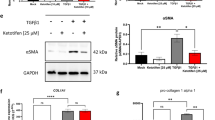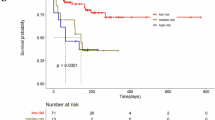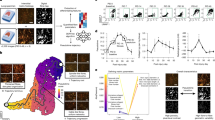Abstract
The antifibromatogenic potency of deoxycorticosterone—prevention of œstrogen-induced abdominal fibroids—diminishes through the substitution O=C11 (Kendall's compound A) and especially through OH– –C17 (Reichstein's compound S)1. The anti-fibromatogenic potency of cortisone,which differs from deoxycorticosterone by both these substitutions, is also strikingly diminished; there were fibroids even with as much as 1,000 µgm. of cortisone acetate per day. But, on the other hand, there apparently was some antifibromatogenic activity of compound F, or 17-hydroxy-corticosterone (OH– –C17 and OH—C11); we had thus to raise the question of a ‘protective’ action of OH—C11 against OH– –C17. However, in view of the variations of the fibrous tumoral effect met with in similar experiments, and especially in view of the small number of experiments performed with compound F, the conclusion as to the supposed ‘protective’ action of OH—C11 against OH– –C17 remained doubtful1. In the meantime, we have been able to settle this question in what seems to be a definite manner, thanks to the kindness of Messrs. Merck and Co., who put at our disposal the necessary quantities of compound F acetate.
This is a preview of subscription content, access via your institution
Access options
Subscribe to this journal
Receive 51 print issues and online access
$199.00 per year
only $3.90 per issue
Buy this article
- Purchase on SpringerLink
- Instant access to full article PDF
Prices may be subject to local taxes which are calculated during checkout
Similar content being viewed by others
References
Mardones, E., Iglesias, R., Fuenzalida, F., Bruzzone, S., and Lipschutz, A., Nature, 170, 917 (1952).
Stock, C. C., Ciba Found. Coll. Endocrinol., 1, 135 (1952).
Lipschutz, A., Mardones, E., Iglesias, R., Fuenzalida, F., and Bruzzone, S., Science, 116, 448 (1952).
Author information
Authors and Affiliations
Rights and permissions
About this article
Cite this article
MARDONES, E., IGLESIAS, R. & LIPSCHUTZ, A. Structural Features of Antitumorigenic Corticoids. Nature 171, 1026 (1953). https://doi.org/10.1038/1711026a0
Issue date:
DOI: https://doi.org/10.1038/1711026a0



